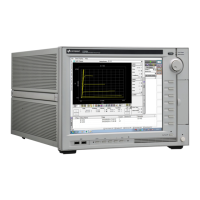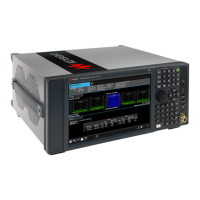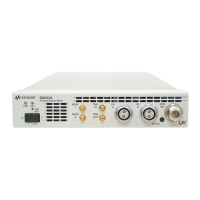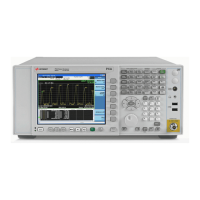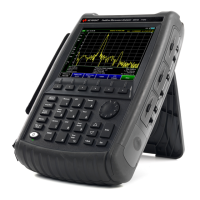3 Calibration Procedures
44 Keysight 34980A Service Guide
Gain Verification
This procedure is used to check the “full scale” reading accuracy of the internal
DMM. Verification checks are performed only for those functions and ranges with
unique gain calibration constants.
DC VOLTS, Resistance, and DC CURRENT Gain Verification Test
1 Make sure you have read “DMM Test Considerations” on page 42.
2 Select each function and range in the order shown below. Provide the input
shown in the table below.
3 Make a measurement and return the result. Compare measurement results to
the appropriate test limits shown in the table. (Be certain to allow for
appropriate source settling when using the Fluke 5700A.)
Short
2-Wire
Ohms
[2]
and
4-Wire Ohms
100 Ω ± 3.5 mΩ ± 4 mΩ ± 4 mΩ
Short 1 kΩ ± 6 mΩ ± 10 mΩ ± 10 mΩ
Short 10 kΩ Q ± 50 mΩ ± 100 mΩ ± 100 mΩ
Short 100 kΩ ± 500 mΩ ± 1 Ω ± 1 Ω
Short 1 MΩ ± 10 Ω ± 10 Ω ± 10 Ω
Short 10 MΩ ± 100 Ω ± 100 Ω ± 100 Ω
Short 100 MΩ ± 10 kΩ ± 10 kΩ ± 10 kΩ
[1] Select 6½ digit resolution.
[2] For 2-wire ohms using a multiplexer for the input connections, an additional 4 Ω of error for the relay contacts must be added.
Q: Quick performance verification test points.
Zero offset calibration using a multifunction calibrator is NOT recommended.
The calibrator and cabling offset can be large and unstable causing poor offset
calibration of the internal DMM.
Quick
Check
Error from Nominal
Input
Function
[1]
Range 24 hour 90 day 1 year
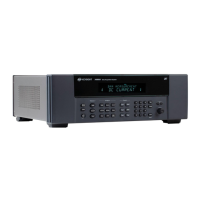
